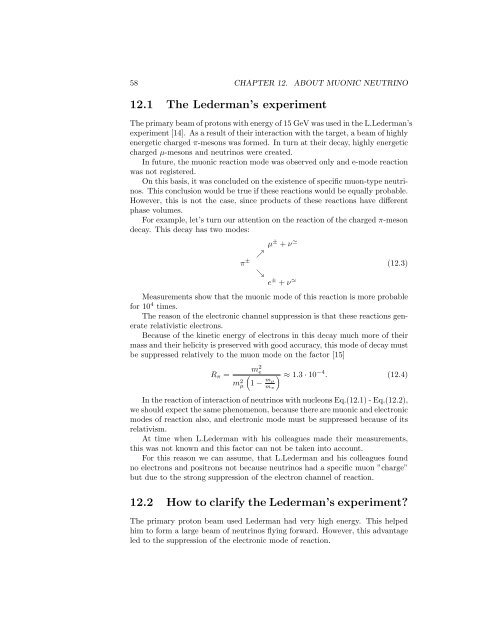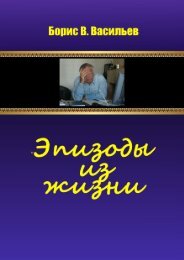VbvNeuE-001
Boris V. Vasiliev About Quantum-Mechanical Nature of Nuclear Forces and Electromagnetic Nature of Neutrinos
Boris V. Vasiliev
About Quantum-Mechanical Nature of Nuclear Forces
and Electromagnetic Nature of Neutrinos
Create successful ePaper yourself
Turn your PDF publications into a flip-book with our unique Google optimized e-Paper software.
58 CHAPTER 12. ABOUT MUONIC NEUTRINO<br />
12.1 The Lederman’s experiment<br />
The primary beam of protons with energy of 15 GeV was used in the L.Lederman’s<br />
experiment [14]. As a result of their interaction with the target, a beam of highly<br />
energetic charged π-mesons was formed. In turn at their decay, highly energetic<br />
charged µ-mesons and neutrinos were created.<br />
In future, the muonic reaction mode was observed only and e-mode reaction<br />
was not registered.<br />
On this basis, it was concluded on the existence of specific muon-type neutrinos.<br />
This conclusion would be true if these reactions would be equally probable.<br />
However, this is not the case, since products of these reactions have different<br />
phase volumes.<br />
For example, let’s turn our attention on the reaction of the charged π-meson<br />
decay. This decay has two modes:<br />
π ±<br />
µ ± + ν ≃<br />
↗<br />
(12.3)<br />
↘<br />
e ± + ν ≃<br />
Measurements show that the muonic mode of this reaction is more probable<br />
for 10 4 times.<br />
The reason of the electronic channel suppression is that these reactions generate<br />
relativistic electrons.<br />
Because of the kinetic energy of electrons in this decay much more of their<br />
mass and their helicity is preserved with good accuracy, this mode of decay must<br />
be suppressed relatively to the muon mode on the factor [15]<br />
R π =<br />
m 2 µ<br />
m 2 e<br />
(<br />
1 − mµ<br />
m π<br />
) ≈ 1.3 · 10 −4 . (12.4)<br />
In the reaction of interaction of neutrinos with nucleons Eq.(12.1) - Eq.(12.2),<br />
we should expect the same phenomenon, because there are muonic and electronic<br />
modes of reaction also, and electronic mode must be suppressed because of its<br />
relativism.<br />
At time when L.Lederman with his colleagues made their measurements,<br />
this was not known and this factor can not be taken into account.<br />
For this reason we can assume, that L.Lederman and his colleagues found<br />
no electrons and positrons not because neutrinos had a specific muon ”charge”<br />
but due to the strong suppression of the electron channel of reaction.<br />
12.2 How to clarify the Lederman’s experiment?<br />
The primary proton beam used Lederman had very high energy. This helped<br />
him to form a large beam of neutrinos flying forward. However, this advantage<br />
led to the suppression of the electronic mode of reaction.












